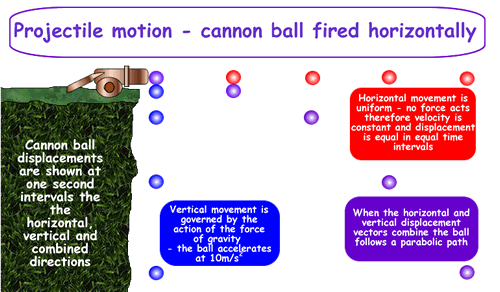Projectiles
HorizontallyThe projectile is moving with no force acting on it (except air resistance which you are able to ignore in most cases. There is there force no acceleration (F=ma) so the projectile moves at a constant horizontal velocity all of the time it is in the air. velocityH = displacementH / time taken VerticallyThe projectile is moving under gravity. It is therefore suffering a force making it decelerate as it rises and a force making it accelerate as it falls. The acceleration due to gravity is 9.81 ms-2.
You can use them because its vertical movement is a situation where a constant force is acting – and that is the case if it moves under gravity with no other forces of significant size. v V =u V + aVt
Once you know how long the projectile is in the air you can work out the range of the projectile using velocity = displacement/time.
|
Follow me...
|






